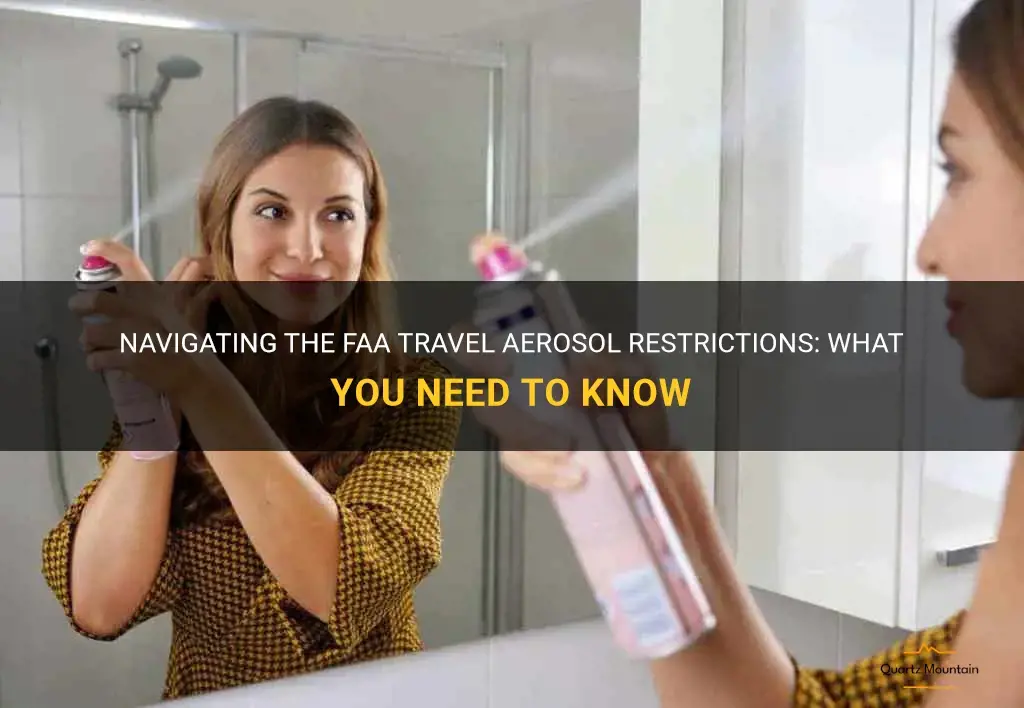
Do you ever wonder what items you can and cannot bring on an airplane? The Federal Aviation Administration (FAA) has established strict regulations to ensure the safety of air travel. One particular area of concern is aerosol products. These can range from common household items like hairspray and deodorant to medical products like inhalers. Understanding the FAA's travel aerosol restrictions is crucial for every traveler to ensure a smooth and hassle-free journey. Let's dive deeper into this topic and discover what you need to know before packing your bags and taking to the skies.
What You'll Learn
- What are the current restrictions on travel-size aerosol cans set by the FAA?
- Can passengers carry aerosol cans in their carry-on luggage?
- Are there any exceptions to the restrictions on aerosol cans in carry-on luggage?
- What are the penalties for violating the FAA's aerosol can restrictions?
- Are there any alternative options or recommendations for transporting aerosol cans during air travel?

What are the current restrictions on travel-size aerosol cans set by the FAA?
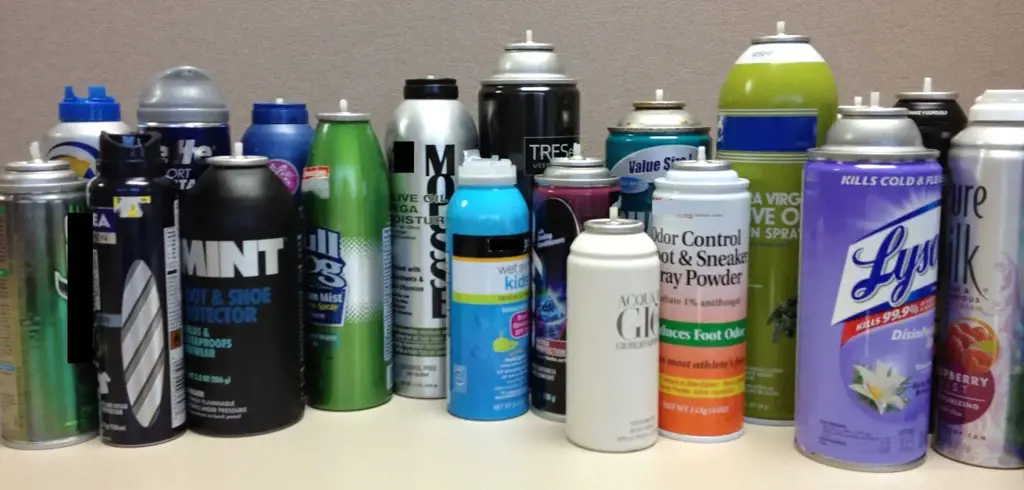
The Federal Aviation Administration (FAA) sets specific restrictions on travel-size aerosol cans that can be carried on airplanes. These restrictions are in place to ensure the safety of passengers and crew members. It is important for travelers to be aware of these regulations before packing their bags for a flight.
According to the FAA, passengers are allowed to bring travel-size aerosol cans in their carry-on bags, as long as they meet certain size and quantity limitations. The size limitation for aerosol cans is a maximum of 3.4 ounces (100 milliliters) per can. This restriction is part of the overall liquid carry-on rule, which also applies to gels, creams, and other liquids.
In addition to the size restriction, passengers are also limited to carrying a maximum of one quart-sized clear sealable bag filled with travel-size aerosol cans. This bag must be taken out of your carry-on luggage and placed in a separate bin for screening at the security checkpoint. It is important to note that each individual aerosol can must fit within the quart-sized bag and not exceed the size limitations.
Some examples of travel-size aerosol cans commonly allowed in carry-on luggage include hair spray, deodorant, and shaving cream. However, it is crucial to check the specific guidelines provided by the airline or the TSA (Transportation Security Administration) before packing any aerosol cans in your carry-on bags. Certain airlines may have more stringent policies, and it is important to follow their guidelines to avoid any issues during the security screening process.
If you are uncertain about whether or not a particular aerosol can is allowed in your carry-on luggage, it is best to contact the airline directly for clarification. They can provide you with the most up-to-date information regarding their policies on travel-size aerosol cans.
It is also important to properly secure your travel-size aerosol cans to prevent any leakage during the flight. Ensure that the caps are tightly closed and consider placing the cans in a plastic bag to contain any potential spills. This will help to prevent damage to your belongings and any inconvenience caused by leakages.
Overall, it is possible to bring travel-size aerosol cans on airplanes as long as they comply with the restrictions set by the FAA. By following these guidelines, you can ensure a smoother travel experience and avoid any delays or issues at the security checkpoint. As always, it is recommended to check with the specific airline or TSA for any additional requirements or changes to the regulations before your flight.
Understanding Air France International Travel Baggage Restrictions: Everything You Need to Know
You may want to see also

Can passengers carry aerosol cans in their carry-on luggage?
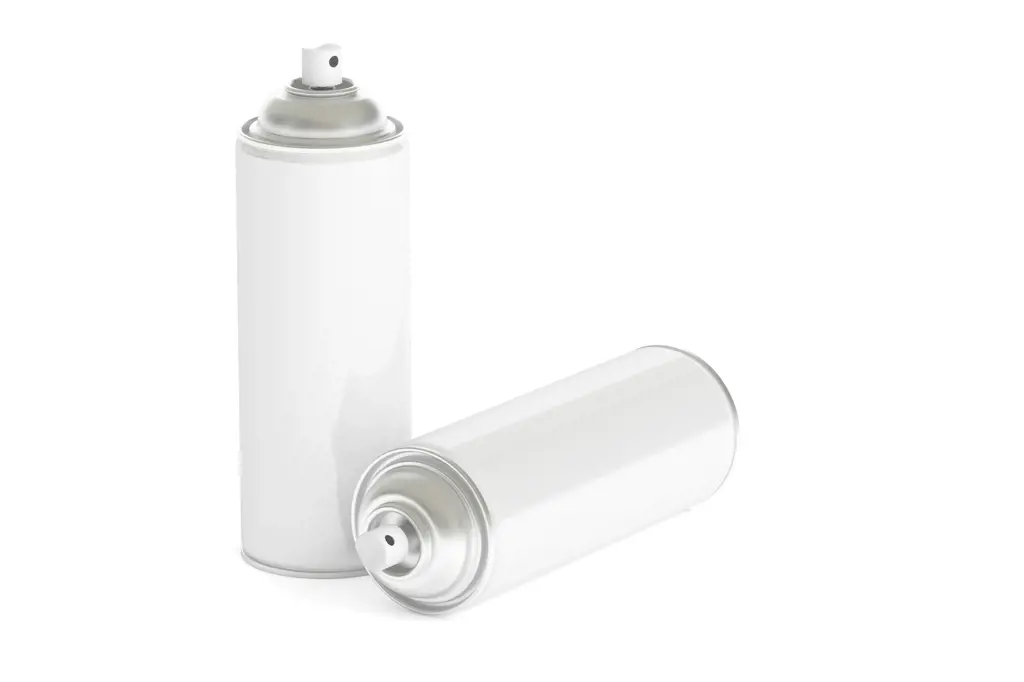
When it comes to traveling by airplane, there are certain restrictions on what passengers can bring with them in their carry-on luggage. One common question that arises is whether or not passengers can carry aerosol cans with them in their carry-on bags.
The Transportation Security Administration (TSA) has specific guidelines in place regarding the transport of aerosol cans in carry-on luggage. According to their regulations, passengers are allowed to bring aerosol cans in carry-on bags, as long as they meet certain requirements.
First and foremost, it is important to note that the size of the aerosol can plays a role in whether or not it can be brought in carry-on luggage. According to the TSA, aerosol cans must be 3.4 ounces (100 milliliters) or smaller to be allowed in carry-on bags. This size restriction applies to both full and partially filled aerosol cans.
In addition to the size requirement, there are also restrictions on the types of aerosol products that can be brought in carry-on luggage. Some aerosol products, such as hairspray, body spray, and deodorant, are generally allowed in carry-on bags. However, there are certain restrictions on flammable aerosols.
Flammable aerosols, such as spray paint or certain cleaning products, are typically not allowed in carry-on luggage. These types of aerosols are considered hazardous materials and are prohibited from being brought on board an aircraft. Instead, passengers must pack these items in their checked luggage, following the necessary guidelines for packing hazardous materials.
It is also important to keep in mind that even if aerosol cans are allowed in carry-on bags, they must still comply with the TSA's liquid restrictions. This means that all aerosols must be placed in a clear, quart-sized plastic bag and each individual container must be 3.4 ounces or smaller.
It is important to note that these guidelines may vary depending on the airline and destination. Some airlines may have more specific restrictions on aerosol cans, while certain countries may have their own regulations in place.
In conclusion, passengers are generally allowed to bring aerosol cans in their carry-on luggage, as long as they meet the size requirements and do not contain flammable materials. Passengers should always check with the airline and destination country for any specific regulations or restrictions before packing aerosol cans in their carry-on bags.
DOD Imposes Restricted Travel to Costa Rica: Everything You Need to Know
You may want to see also

Are there any exceptions to the restrictions on aerosol cans in carry-on luggage?
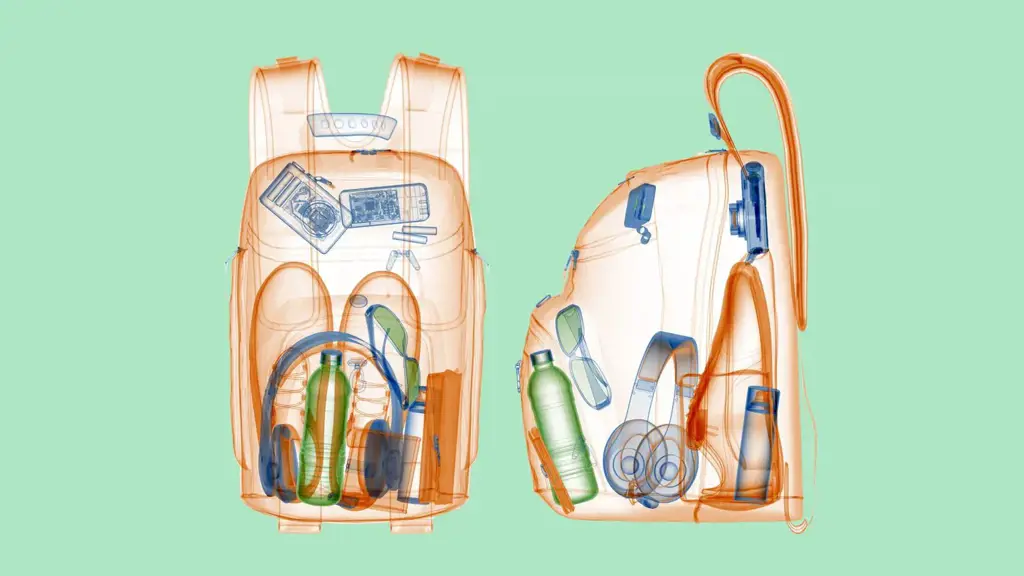
Aerosol cans are a common product that many people use for personal care, cleaning, and maintenance. However, when it comes to traveling with aerosol cans, there are restrictions in place to ensure the safety of passengers. Typically, aerosol cans are not allowed in carry-on luggage due to the risk of explosion or combustion. However, there are a few exceptions to this rule.
One exception to the restrictions on aerosol cans in carry-on luggage is if the can is a personal care item and meets the limited quantity requirements set by the Transportation Security Administration (TSA). Personal care items such as aerosol deodorant, hairspray, and shaving cream are allowed in carry-on luggage if they are in containers that hold 3.4 ounces (100 milliliters) or less. These containers must be placed in a clear, quart-sized plastic bag along with other liquids and gels that the passenger is carrying onboard.
Another exception to the restrictions on aerosol cans in carry-on luggage is if the can is a medical or assistive device. Some people rely on aerosolized medication, such as inhalers, for their health conditions. These aerosol cans are allowed in carry-on luggage but must be presented to the TSA officer at the security checkpoint for inspection. Passengers may also carry other assistive devices, such as aerosolized bug spray or sunscreen, in their carry-on as long as they are presented for inspection.
It's important to note that while aerosol cans may be allowed in carry-on luggage in these exceptions, they may still be subject to additional screening or prohibited on certain flights. It is always best to check with the airline or TSA before traveling to ensure that you are in compliance with the regulations.
In conclusion, there are exceptions to the restrictions on aerosol cans in carry-on luggage. Personal care items that meet the limited quantity requirements and medical or assistive devices are allowed in carry-on luggage, but they may be subject to additional screening. It is essential to check with the airline or TSA before traveling to ensure compliance with the regulations.
Understanding DUI Travel Restrictions in Ireland
You may want to see also

What are the penalties for violating the FAA's aerosol can restrictions?

The Federal Aviation Administration (FAA) has strict regulations when it comes to aerosol cans and their transportation on commercial flights. These regulations are in place to ensure the safety of passengers and crew members. Violations of these regulations can result in severe penalties.
Aerosol cans are considered hazardous materials due to their volatile contents and pressurized containers. In order to transport aerosol cans on a commercial flight, several restrictions must be followed. These restrictions include limitations on the size and quantity of aerosol cans, as well as proper packaging and labeling.
If a passenger is found to be in violation of the FAA’s aerosol can restrictions, the consequences can be serious. First and foremost, the passenger may be denied boarding and not allowed to take their aerosol cans on the flight. This can be a significant inconvenience, especially if the passenger relies on these products for their daily routine.
In addition to being denied boarding, the passenger may face legal consequences. The FAA has the authority to impose civil penalties for violations of their regulations. The amount of these penalties can vary depending on the severity of the violation. For example, if a passenger has an excessive quantity of aerosol cans or fails to properly package them, they may face a higher penalty.
The FAA also has the authority to refer violations to law enforcement agencies for criminal prosecution. While criminal charges are less common, they can result in fines, probation, or even jail time, depending on the circumstances of the case. It is worth noting that even unintentional violations can still result in penalties, as ignorance of the regulations is not a valid defense.
To avoid penalties for violating the FAAs aerosol can restrictions, it is important for passengers to familiarize themselves with the regulations and plan accordingly. Passengers should check with their airline for specific guidelines regarding aerosol cans and pack their belongings accordingly. It is also advisable to label aerosol cans properly and keep them in carry-on luggage to prevent accidental punctures or leaks.
In conclusion, violating the FAA’s aerosol can restrictions can result in serious consequences. These penalties can include being denied boarding and facing civil or criminal charges. Passengers should familiarize themselves with the regulations and comply with them to avoid any potential penalties. It is always better to be safe and prepared when traveling with aerosol cans on a commercial flight.
Unpacking the Restrictions: What You Need to Know About Amtrak's Travel Item Policies
You may want to see also

Are there any alternative options or recommendations for transporting aerosol cans during air travel?
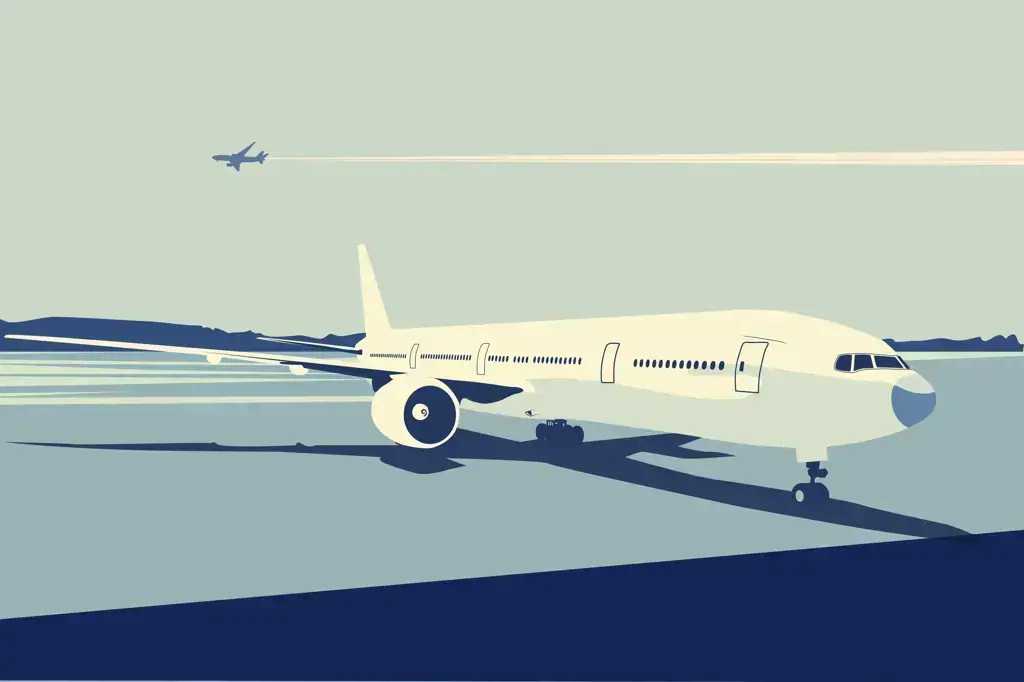
When it comes to transporting aerosol cans during air travel, the regulations can be restrictive due to safety concerns. However, there are alternative options and recommendations that travelers can consider when it comes to carrying aerosol cans on a flight.
The Transportation Security Administration (TSA) has specific guidelines for carrying aerosol cans in both carry-on and checked luggage. In carry-on bags, aerosol cans that contain products such as mace, pepper spray, or paint are not allowed. However, aerosol products such as deodorant, hairspray, and shaving cream, among others, are generally allowed as long as they are in containers of 3.4 ounces (100 milliliters) or less. These containers should be placed in a clear, quart-sized, resealable bag and presented separately for inspection at the security checkpoint.
If you wish to carry aerosol cans larger than 3.4 ounces, the alternative option is to pack them in your checked luggage. In checked bags, aerosol cans are generally allowed as long as they are not prohibited items such as paint, mace, or pepper spray. However, it is strongly recommended to check with the airline to ensure compliance with their specific rules and regulations.
To transport aerosol cans safely in checked luggage, it is crucial to take some precautions. First, make sure to place the cans in a sturdy container to protect them from damage during handling. Consider wrapping the cans in clothing or placing them in a toiletry bag to provide an extra layer of protection. Additionally, it is wise to place the aerosol cans in an upright position to prevent leakage or accidental discharge.
If you are uncertain about the safety regulations or have any concerns about transporting aerosol cans during air travel, it is always best to contact the airline directly. The airline's customer service representatives will be able to provide the most up-to-date information and guidance based on their specific policies.
In conclusion, while there are restrictions on carrying aerosol cans during air travel, there are alternative options and recommendations to transport them safely. By following the guidelines set by the TSA and consulting with the airline, travelers can ensure a smooth and hassle-free experience when traveling with aerosol cans.
Navigating Tulum Travel Restrictions: What to Know Before You Go
You may want to see also
Frequently asked questions
According to FAA guidelines, travel-sized aerosols that contain personal care items such as hairspray, deodorant, or sunscreen are generally allowed in carry-on bags as long as they meet the 3.4 ounces (100 milliliters) or less rule. However, it is always recommended to check with the specific airline you are flying with to ensure compliance with their specific regulations.
While aerosol cans are generally allowed in checked baggage, there are some restrictions to be aware of. Aerosols that are potentially flammable, such as spray paint or air fresheners, may be restricted or even prohibited. It is important to review the FAA's guidelines and check with your airline to determine if there are any specific restrictions on the aerosol can you wish to bring.
Empty aerosol cans are typically allowed in checked baggage, as long as they are securely closed and pose no risk of accidental discharge. However, it is advisable to check with your airline as they may have their own specific regulations regarding the transportation of empty aerosol cans.
The FAA does not have specific labeling requirements for aerosol cans in carry-on or checked bags. However, it is always a good idea to make sure the can is properly labeled and identifiable in case there are any questions or concerns during the security screening process.
If your aerosol can is confiscated by airport security, you have a few options. You can either voluntarily surrender the item or request that it be placed in your checked baggage if possible. It is important to remember that airport security personnel have the final say in determining what is allowed on the aircraft, so it is best to comply with their instructions to ensure a smooth travel experience.







